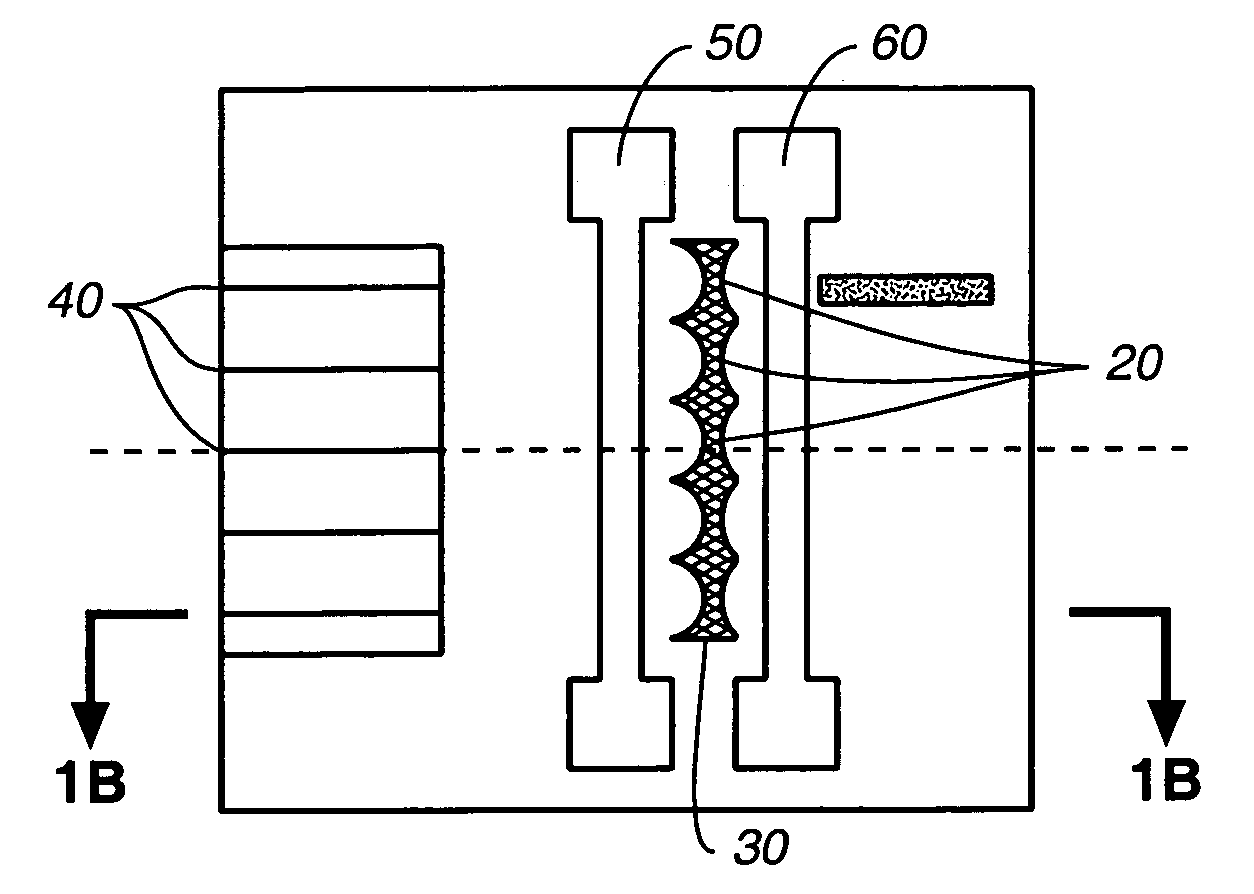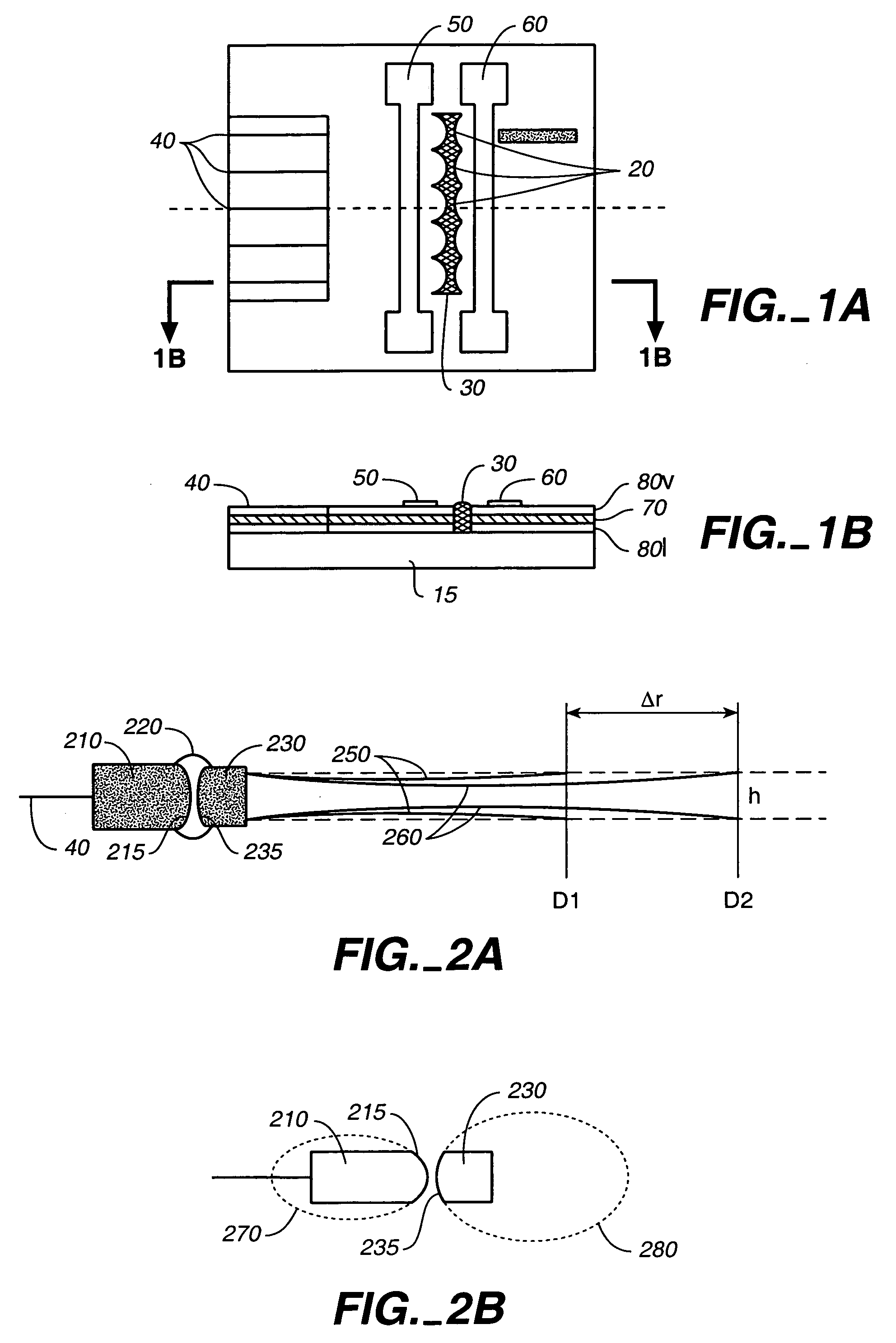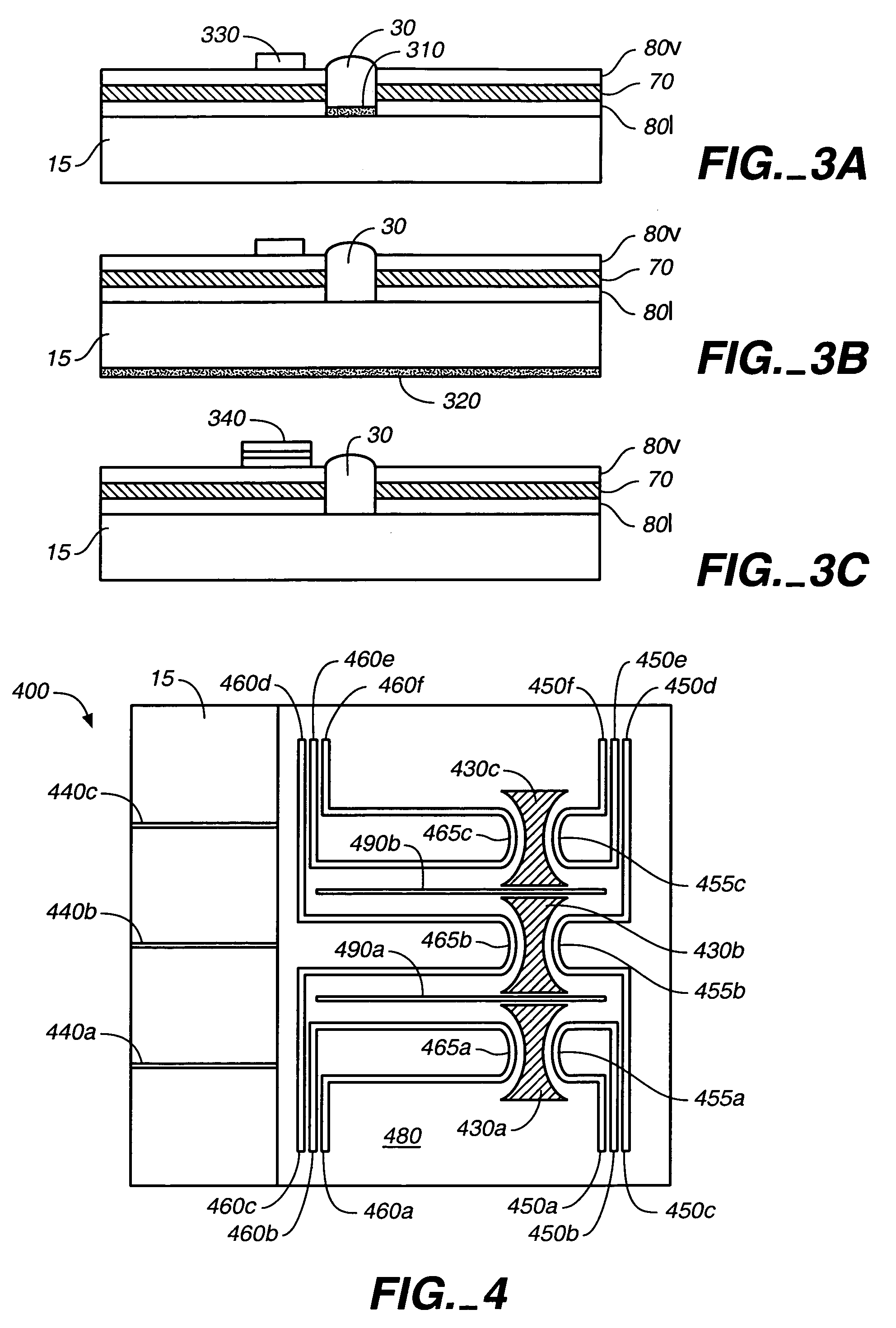Tunable micro-lens array
a micro-lens array and optical lens technology, applied in the field of micro-lenses, can solve problems such as the expectation of propagation rather long distances
- Summary
- Abstract
- Description
- Claims
- Application Information
AI Technical Summary
Benefits of technology
Problems solved by technology
Method used
Image
Examples
Embodiment Construction
[0022]As described above, as recognized by the present inventors, there are a variety of reasons why its is desirable to use tunable micro-lenses and micro-lens arrays in various types of optical systems and devices. Changes in environmental conditions (e.g., temperature), light wavelength, polarization states, etc., over time can cause deviations in system or device performance. Other devices in the optical system may have requirements which vary over time. Likewise, manufacturing variability can cause differences in device performance which can be addressed by tuning the system.
[0023]Some optical devices, such as switches, have arrays of closely packed input and output channels. Such devices require the ability to produce collimated light beams which traverse distances as great as 10–15 cm. The pitch of adjacent channels can be as small as 500 microns, requiring that the beam width be kept below 450 microns. Keeping beam widths within these limits requires cross-collimation rather...
PUM
| Property | Measurement | Unit |
|---|---|---|
| traverse distances | aaaaa | aaaaa |
| width | aaaaa | aaaaa |
| width | aaaaa | aaaaa |
Abstract
Description
Claims
Application Information
 Login to View More
Login to View More - R&D
- Intellectual Property
- Life Sciences
- Materials
- Tech Scout
- Unparalleled Data Quality
- Higher Quality Content
- 60% Fewer Hallucinations
Browse by: Latest US Patents, China's latest patents, Technical Efficacy Thesaurus, Application Domain, Technology Topic, Popular Technical Reports.
© 2025 PatSnap. All rights reserved.Legal|Privacy policy|Modern Slavery Act Transparency Statement|Sitemap|About US| Contact US: help@patsnap.com



